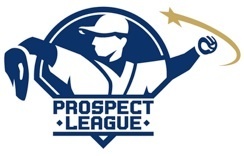 The summer-collegiate Prospect League is now in its fifth year, and while there are many success stories on the field and in the front office, league officials say there is plenty of room for improvement.
The summer-collegiate Prospect League is now in its fifth year, and while there are many success stories on the field and in the front office, league officials say there is plenty of room for improvement.
There are two ways to run a summer-collegiate league: for-profit versus nonprofit. Leagues like the Cape Cod League and the Ripken League are run as nonprofits, receiving a small MLB subsidy and working off community support.
But the modern trend has been to launch for-profit summer-collegiate leagues. After the launch of the Northwoods League 20 years ago, most of the major efforts on the summer-collegiate field — the West Coast League, the Texas Collegiate League, the Futures League and the Prospect League — have had a goal of making money. When done right, it’s a great model: playing in old minor-league ballparks, summer-collegiate teams have minimal payrolls, low costs and a decent profit margin. But that profit isn’t automatic, and teams still need to work on execution. The Prospect League is a good example: some teams do better than others. From the Quincy Herald-Whig:
Although the league’s finances are not made public, Commissioner David Chase said turning profits has been a struggle for many of the teams in the league.
“Is everybody profitable? No. Are the majority of the teams profitable? No,” Chase said. “But again, I think that speaks more volume on the fact that the league is only five years old and the economic problems we’re all facing. … We have some teams that turn a profit. It can be done.”
Chillicothe Paints general manager Bryan Wickline agrees with Chase that Prospect League organizations can turn profits. Wickline, whose team ranks second in the league in attendance at 1,398 fans per game behind Danville (1,437), didn’t disclose the financial status of his team other than to say, “We do OK. We do fine.”
Some of the markets and ballparks in the Prospect League are limited and will be a challenge on the financials, but there’s true of every summer-collegiate league. There are some controllable issues that can be addressed, however; the league has 11 teams, which causes all sorts of travel and player issues, as the solution has been a lot of single-game road trips.
—-
Share your news with the baseball community. Send it to us at editors@augustpublications.com.
Are you a subscriber to the weekly Ballpark Digest newsletter? You can sign up for a free subscription at the Newsletter Signup Page.
Join Ballpark Digest on Facebook and on Twitter!
Follow Ballpark Digest on Google + and add us to your circles!
